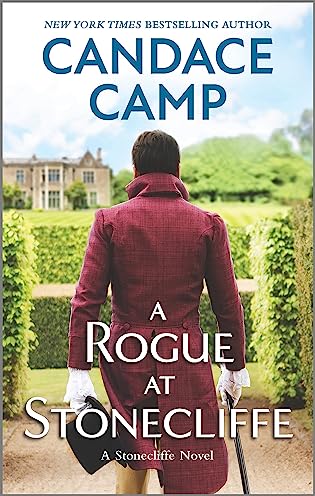 A Rogue at Stonecliffe (Stonecliffe, #2) by Candace Camp
A Rogue at Stonecliffe (Stonecliffe, #2) by Candace Camp Format: eARC
Source: supplied by publisher via NetGalley
Formats available: paperback, ebook, audiobook
Genres: historical fiction, historical romance
Series: Stonecliffe #2
Pages: 384
Published by Canary Street Press on June 27, 2023
Purchasing Info: Author's Website, Publisher's Website, Amazon, Barnes & Noble, Kobo, Bookshop.org
Goodreads
New York Times bestselling author Candace Camp invites you back to Stonecliffe, where an unwelcome reunion between a lady and a rogue calls up old feelings…and new dangers.
When the love of her life left without any explanation, Annabeth Winfield moved on despairingly, knowing she’d never have a love as thrilling as her first ever again. Sloane Rutherford was roguish and daring, but as Annabeth grew up, she realized that their reckless romance was just a passing adventure, never meant for stability. Twelve years later, Annabeth is engaged to someone new, ready to start her life with a dependable man.
That’s when Sloane returns. And he brings with him a serious warning: Annabeth is in trouble.
After spending the past dozen years working as a spy, Sloane thought he’d left espionage behind him. But now a dangerous blackmailer is after Annabeth. Sloane offers to hide his former lover at Stonecliffe, the Rutherford estate, but stubborn Annabeth demands to be part of the investigation. As the two embark on a dangerous and exciting journey, memories of their past romance resurface. Sloane and Annabeth aren’t the wide-eyed children they used to be, but knowing they’re wrong for each other makes a nostalgic affair seem very right…
A Stonecliffe Novel
Book 1: An Affair at StonecliffeBook 2: A Rogue at Stonecliffe
My Review:
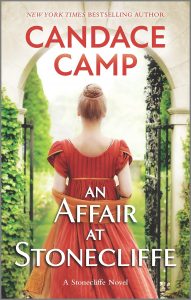 Fictionally speaking, the Napoleonic Wars are a gift that just keeps on giving. And taking, as happens in this second book in the Stonecliffe series, after last year’s An Affair at Stonecliffe. (Which I have not read – yet – but am now looking forward to!)
Fictionally speaking, the Napoleonic Wars are a gift that just keeps on giving. And taking, as happens in this second book in the Stonecliffe series, after last year’s An Affair at Stonecliffe. (Which I have not read – yet – but am now looking forward to!)
The Napoleonic Wars are long over when that rogue of the title returns home to Stonecliffe, but that is not when this story begins. It began twelve years earlier, in 1810, when the war within the war known as the Peninsular War was still going hot, and the cold and chill war of spies and smugglers was complicating progress on both sides of the Channel.
Sloane Rutherford and Annabeth Winfield were young, in love, and expecting to marry as soon as Anna attained her majority at 21. As the children of somewhat spendthrift second sons of the aristocracy, they’ve been raised on the fringes of the ton without ever being truly part of it. They can marry for love – and that’s exactly what they intend to do.
At least until the seemingly endless war interferes with their hopes and dreams, in the person of Britain’s spymaster, Asquith. Asquith needs someone to pose as a disaffected spy and smuggler, and has decided that Sloane is the perfect man for a job that the younger man has no desire to do.
But Asquith has leverage. Not against Sloane himself, but against Anna’s beloved father, who has turned traitorous spy because someone in France has leverage on him. Sloane is faced with an impossible choice, whether to give up Anna, let everything think he has turned his back on his own country, and steal back the incriminating documents that keep her father in thrall, or let Asquith expose her father’s treachery and let the ensuing scandal fall on Anna and her family.
Sloane is damned if he does – literally – and equally damned if he doesn’t. So he does, because his choice is always going to be action over inaction. He leaves Anna in the painful lurch, and pretends to be everything that the ton ends up believing, that he’s a rogue, a smuggler, and a spy.
Even after the wars are over, and Sloane is back in England running the shipping empire that was his well-earned pay for a deadly and dangerous game, he and Anna stay far, far away from each other.
Until that incriminating paper that was once held over her father’s head puts Anna’s life in danger. So Sloane does what he always does – he acts. He’s the only one who takes the danger seriously enough to protect Anna at any and all costs – especially to his own heart.
Escape Rating B: The story in A Rogue at Stonecliffe reads like a combination of the chickens coming home to roost and an old truism about it not being the original crime that gets someone in trouble nearly half so much as it’s the coverup that does them in.
Mixed with a second chance at love story whose tension isn’t “will they, won’t they” because they already did, or even “should they or shouldn’t they”, because it’s obvious early on that they should, but much more about whether they can manage to get past all the damage that they’ve already done to each other.
Or more to the point, all the damage that Sloane has already done to Anna. Because he seriously effed up by taking solely unto himself a whole heaping helping of decisions that should rightfully have been shared. And that’s something they’re going to have to work on together in order to have any kind of future.
And it’s not easy to do that when bullets are flying and people are trying to kill one or both of them and there’s a dangerous secret at the bottom of the dirty barrel that neither of them knows the full depths of until it’s nearly too late.
There’s more than a bit of romantic suspense in this, as Sloane and Anna are searching for a secret that once damned her father and has the capacity to take the rest of the family down with him now that he’s dead. All the while, Sloane is trying to keep both of them a few steps ahead of a traitor who has been hiding in plain sight for over a decade.
But what makes this one so much fun is Anna and her relationship with Sloane. Not the hazy dream they had in the past, but the real, and increasingly honest and equal one they have in the present. Sloane wants to keep her safe. Anna has the right to know all the truths and make her own decisions. Navigating that minefield is even more of a threat to any possibility of their future happiness than any sharpshooters taking potshots from the woods.
The Stonecliffe series has proved to be a fascinating mix of historical romance and romantic suspense, at least based on this second book in the series. So I’ll be reaching back for that first book, An Affair at Stonecliffe, and looking forward to the third, A Scandal at Stonecliffe, coming next year.


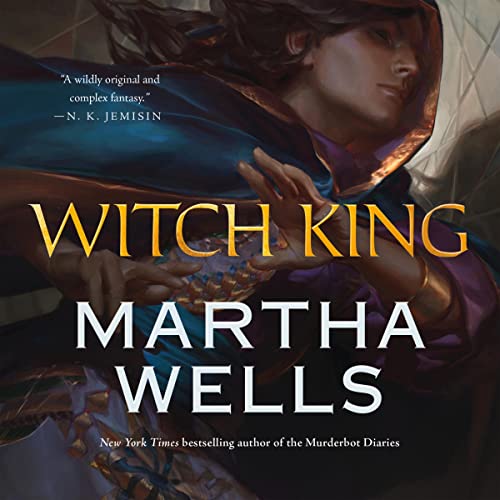 Witch King by
Witch King by  I believe that just how much anyone will like Witch King depends on what you were expecting from it. If you’re looking for more
I believe that just how much anyone will like Witch King depends on what you were expecting from it. If you’re looking for more 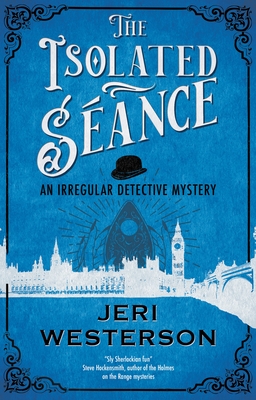 The Isolated Séance (An Irregular Detective Mystery #1) by
The Isolated Séance (An Irregular Detective Mystery #1) by 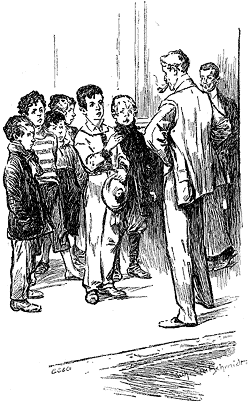
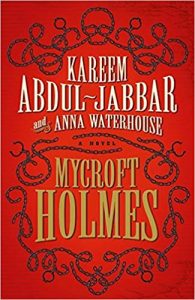 (Although both men are very young, Watson’s circumstances as a black man in a city that is prejudiced against him at every turn gives him a bit of caution and maturity that Badger sadly lacks. Watson’s perspective as someone who will always be considered an outsider even before he opens his mouth reminds this reader of the relationship between a young Mycroft Holmes and the more mature Cyrus Douglas in Kareem Abdul Jabbar’s
(Although both men are very young, Watson’s circumstances as a black man in a city that is prejudiced against him at every turn gives him a bit of caution and maturity that Badger sadly lacks. Watson’s perspective as someone who will always be considered an outsider even before he opens his mouth reminds this reader of the relationship between a young Mycroft Holmes and the more mature Cyrus Douglas in Kareem Abdul Jabbar’s 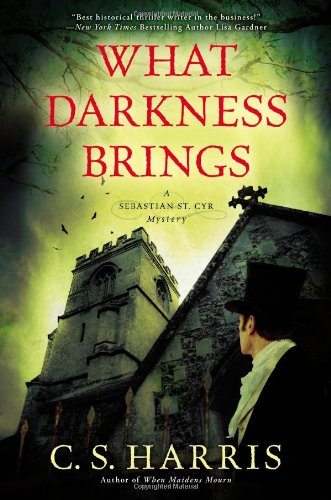 What Darkness Brings (Sebastian St. Cyr, #8) by
What Darkness Brings (Sebastian St. Cyr, #8) by 
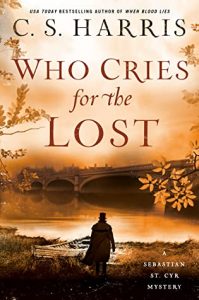 Escape Rating A: It’s not much of a surprise that after
Escape Rating A: It’s not much of a surprise that after 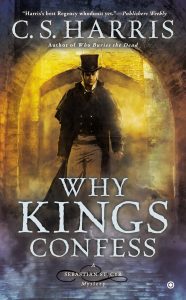 The way the murder, the theft plot and the real history branched and intertwined made this entry in the series one hell of a wild ride, while still tying up loose ends from previous entries and opening up entirely new fields of questions for future books in the series – some of which have admittedly been answered by the point where the series as a whole rests – hopefully temporarily – after
The way the murder, the theft plot and the real history branched and intertwined made this entry in the series one hell of a wild ride, while still tying up loose ends from previous entries and opening up entirely new fields of questions for future books in the series – some of which have admittedly been answered by the point where the series as a whole rests – hopefully temporarily – after 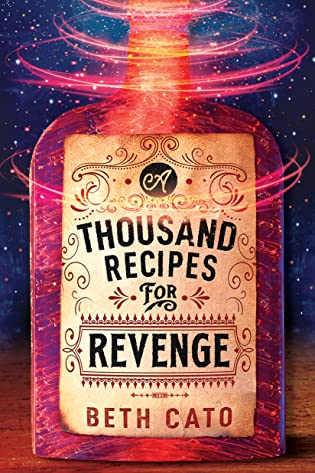 A Thousand Recipes for Revenge by
A Thousand Recipes for Revenge by  Escape Rating A+: I picked this up because I was looking for something else with magical cookery after
Escape Rating A+: I picked this up because I was looking for something else with magical cookery after 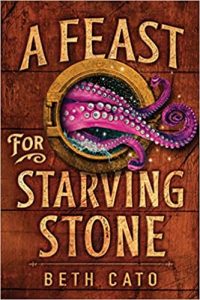 Ada and Solenn give readers two heroines to route for, as this is both Ada’s story of picking up the pieces of the life she left behind and Solenn’s coming of age story and both are fantastic. The world’s setup at first seems fairly standard epic fantasy and then goes to places that are fresh (if occasionally rotting) and new and unexpected. There are bits of Bujold’s
Ada and Solenn give readers two heroines to route for, as this is both Ada’s story of picking up the pieces of the life she left behind and Solenn’s coming of age story and both are fantastic. The world’s setup at first seems fairly standard epic fantasy and then goes to places that are fresh (if occasionally rotting) and new and unexpected. There are bits of Bujold’s 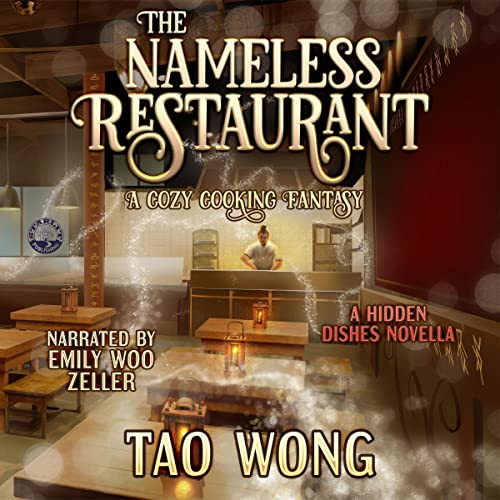 The Nameless Restaurant (Hidden Dishes: Book #1) by
The Nameless Restaurant (Hidden Dishes: Book #1) by 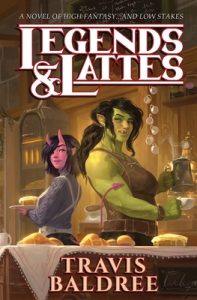 Escape Rating A-: Anyone who loved Travis Baldree’s
Escape Rating A-: Anyone who loved Travis Baldree’s 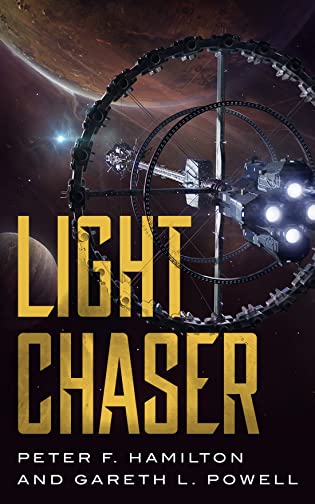 Light Chaser by
Light Chaser by  You Are Here by
You Are Here by  Big Trouble on Sullivan's Island (Carolina Tales Book 1) by
Big Trouble on Sullivan's Island (Carolina Tales Book 1) by 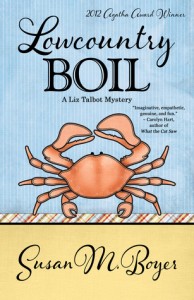 Escape Rating A-: I picked this up because I love the author’s
Escape Rating A-: I picked this up because I love the author’s 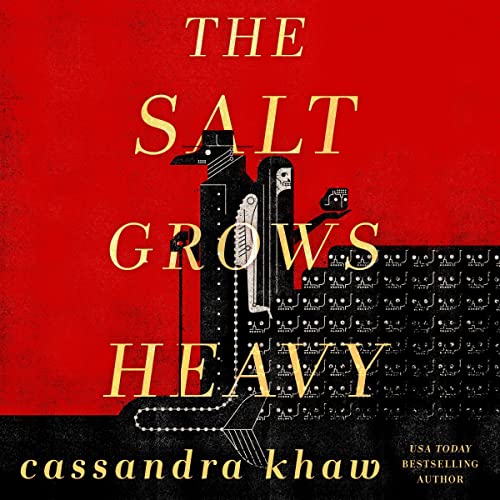 The Salt Grows Heavy by
The Salt Grows Heavy by 
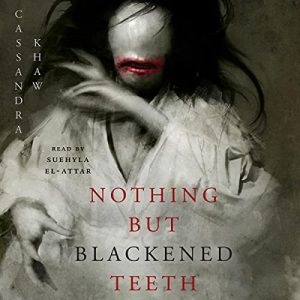 It wasn’t quite as cohesive a story as
It wasn’t quite as cohesive a story as